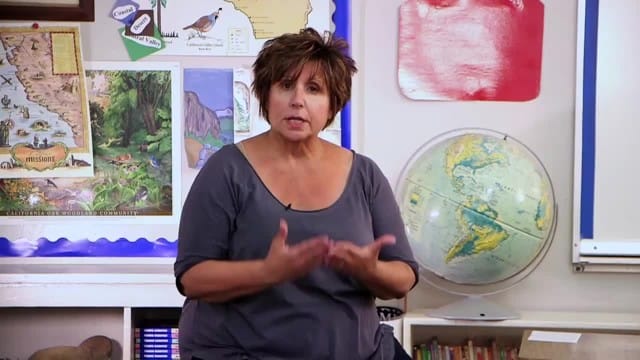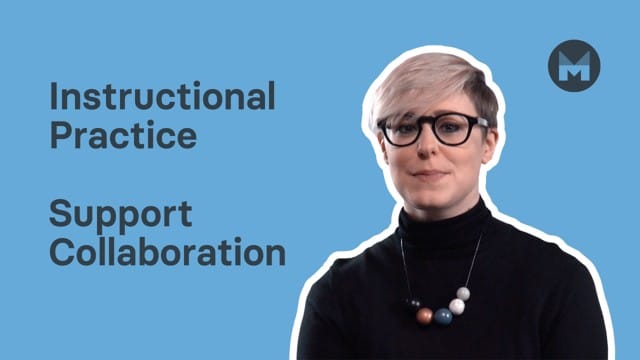How to create a positive learning environment in the classroom
In this guide
Benefits of a positive learning environment
A positive learning environment is vital to a successful classroom. Positive environments are mutually beneficial to both the teacher and the students in a classroom.
One benefit of a positive environment is improved classroom management and a reduction in negative behaviours. When students are in a classroom environment where they want to learn and feel accepted, negative behaviours often decrease. Positive environments help students to be connected and invested in their environment and more engaged in the learning process.
While it is not possible to completely eliminate all negative behaviours, taking steps to create an environment that embraces all students is important. We do not always know about students’ external environments and what may be coming into the classroom with them from home.
In a single classroom, there may be students from a variety of ethnic, socio-economic and other backgrounds. That is why a positive classroom environment can be so important to student growth – academic, social, and emotional. Whilst we have no influence on student home life, the classroom environment is something that the teacher can influence.
Another benefit of a positive classroom environment is academic achievement for students. Students in a supportive and friendly environment do better in school. According to this article, the classroom learning environment can have an impact on student engagement and academic success.
A third benefit of a positive learning environment is social skills development for students. Students in a positive classroom can develop social skills that help them to relate to others as well as to adults. Students learn how to treat others and how they want to be treated.
A positive learning environment fosters communication. Communication between peers and between students and the teacher. Through positive interactions, students learn how to ask for help and how to offer help constructively.
Students are more likely to take risks in a positive learning environment. When students feel safe they are more likely to share and participate in classroom discussions and activities.
1) The first five minutes

One way to create a positive learning environment is by setting the tone at the beginning of each class. The way we start the day, or class period, can have a huge impact on the tone of the rest of the class and how productive and beneficial the learning is in the classroom.
Relationships are very important to the classroom, but with the time constraints teachers are under it can be impossible to make meaningful connections with every student you teach in every class. This is why, in my own classroom, I spend the first 3-5 minutes connecting with my students and giving them time to connect with one another.
This can take several forms. Sometimes we play a quick game or do a team-building activity. Sometimes I put a funny meme on the board and we talk about it.
One thing I like to do is pose a question and have them talk and share their responses. These are usually questions that require a little thinking, like – what qualities do you think a leader should have? Sometimes the questions are for students to discuss with a partner – what is the meaning of your name and do you know why your parents chose it for you?
An activity we have done in the first five minutes is to have the students line up according to birthday order (month and day), but they cannot speak. This gets them thinking about ways to communicate without words.
Another activity that gets students up and moving is to line them up and ask ‘would you rather’ questions. They can step to one side of the line based on their choice. For example:
- Would you rather visit the beach or the mountains?
The questions usually start out simple and progressively get deeper:
- Would you rather be the top student in a class you dislike or an average student in a class you love?
Getting students up out of their seats and moving around is excellent for kinesthetic learners.
The goal of engaging students in a non-academic activity for the first five minutes of class is to build an environment where students feel heard and accepted, where they feel comfortable with one another and, hopefully, new relationships are built and new communication skills are built.
2) Cooperative learning groups
Developing cooperative learning groups within your class can increase positive student relationships and help to support the academic goals in your classroom. Students are learning together, sharing their knowledge and supporting each other’s learning.
Cooperative learning is more structured than just grouping students. Groups are intentionally created by the teacher based on learning styles, abilities, needs etc. The teacher determines the purpose of the group and then places students in groups according to their individual needs. These groups are flexible and can be adjusted according to what is best for students in different subjects and activities.
But what about the age-old problem of one person in a group doing all of the work? Students in cooperative learning groups have specific roles. These roles should vary depending on the students, the content being learned, and the purpose of the group.
If the purpose of a group is to create a poster, the roles may be simple – one student writes, one student illustrates, and one student reports the findings. All of the students in this group would plan and research for the poster.
If the purpose of the project is for the cooperative learning group to complete a lab experiment and write a lab report, the roles may be more demanding. Students may have assigned parts of the lab to complete and specific parts of the report to write. The experiments themselves would need to be shared and documented as to who completed what aspect.
Cooperative learning groups help students to learn how to constructively work in groups to accomplish a goal.
3) Social skills development
As with academics, students do not all come with the same set of social skills. Building social skills is also an important part of the learning environment.
Teaching students how to positively interact with each other can have an impact on daily learning in the classroom.
There are simple social skills activities which are time effective and still allow for students to learn and grow.
Reflective writing
In reflective writing, students are challenged to think of a situation or conflict they are experiencing or have in the past. They are then to write about that experience from a different viewpoint and/or reflect on how they could have handled that situation differently. Students can evaluate different scenarios and determine the best course of action.
Role playing
The amazing thing about role playing is that students in any year group can participate. Role playing conflict resolution, appropriate social interactions, and even how to interview for a job are ways that students can use this activity to increase their social skills and awareness of the feelings of others.
Role playing also allows for more student to student talk. It is important for students, especially language learners, to engage in using purposeful, academic language.
Team building activities
Games and challenges are a fun way to build a team atmosphere and can have a positive impact on the classroom environment.

The balloon tower challenge:
I give small groups of student students 10-15 balloons and a roll of masking tape. Groups are challenged to create the tallest tower using only balloons and tape in 7-10 minutes.
This activity requires students to problem solve and work together towards a goal. If your students are not old enough to blow up balloons, this activity can be modified and done with toothpicks and marshmallows or with sugar cubes. The object stays the same, but the materials can change according to your students and what supplies you have available.
4) Social contracts

Contracts are something that, as adults, we sign on a regular basis. Social contracts stipulate how we treat and interact with each other. They can be a useful tool in the classroom as well.
Developing social contracts with students fosters a sense of belonging and collective ideology. In a social contract we state how we will behave and how we expect others to behave. It is not just a list of rules, but a set of guiding principles for the classroom.
When developing a social contract, it is important that everyone who is a part of the classroom – teachers, students, and support staff – is a part of the process.
I teach secondary school students, but I have seen social contracts be implemented at every age level. Everyone wants to be treated appropriately and have a say in the classroom environment.
To develop a social contract with students follow these steps:
- On a sticky note paper, have students write down one characteristic that makes up a healthy classroom environment. This should be one word, such as “respect.” Add these to a piece of chart paper labelled ‘healthy classroom’.
- On a second sticky note, write down one characteristic of a toxic or unhealthy classroom. Add these to a 2nd piece of chart paper labelled ‘unhealthy classroom’.
- When completed, review the sticky notes and, as a class, group them together with similar responses.
- Use the words on the healthy list to collectively create a class list of positive classroom behaviours. This list will become your social contract.
- Once a list is created, everyone decides if they agree on the social contract. Add items that the class feels are missing, and re-word items that are not positive or conducive to the classroom environment.
- Everyone signs the contract and agrees that they will abide by it.
- Throughout the year, refer to the social contract when necessary or as a refresher.
Sometimes the teacher needs to help guide the discussion. That is okay. Asking guiding questions and making suggestions is a part of being the facilitator for the social contract.
Below is an example of a social contract that my class created at the start of this school year. We followed the steps above and created a contract that everyone agreed to adhere to. When creating our social contract, we made it a point to define some of the more ambiguous words like respect and kindness.

5) Inclusivity
There are ways to foster inclusivity without inviting controversy. One way this is possible is through differentiation. Providing appropriate support for students based on their needs is a way to be inclusive.
There are several ways to provide differentiation, including process, content, and product. Process differentiation involves looking at how the students will learn. Content differentiation involves modifying what the students will learn depending on their interests or capabilities. Product differentiation means that how students show their mastery of a topic or concept can be differentiated.
All types of differentiation require that a teacher know their students, their abilities, strengths, weaknesses and their needs. This model of teaching means that students who know they have a teacher who cares and supports their needs resulting in them feeling more heard, seen and included in their classroom.
Another way to include inclusivity in the classroom is through choice. Providing students with choice allows them to experience a level of control over their own learning. Students do not need to be provided with endless choices and not all activities lend themselves to choices. However, appropriate choices can be given for many classroom activities.
Students can be given choices regarding how they show mastery of materials. For example, in an English lesson, students may be given three options for identifying the theme of a novel. These could be a written paper, an art project, and a presentation, for example. These options allow students to make decisions based on their own strengths and personal preferences.
A final way to increase inclusivity for students is to create roles and responsibilities within the classroom. This could be as simple as creating classroom jobs. It can also mean that when students work in groups, each person has a role that they must fulfil (the reporter, the recorder, the researcher, etc).
Students can have “check-in” partners as well. A check-in partner is someone that students consistently meet with to clarify, discuss, and support each other. Students know that this is a person they can rely on and go to during the school year.
Check-in partners can meet in the first five minutes outlined in Idea 1 or for different subjects throughout the day. It all depends on the age of the students and the structure of the school day.
Giving students a scale to discuss their feelings or understanding can be helpful to boost conversation. Something similar to the pain scale given by the doctor, but not for the pain of course.

There are a wealth of possible scales available that include everything from cats to TV characters. Choose one that will suit your cohort best. Using a scale allows students to have a starting point for discussion with their classmates and for staff to see where understanding might need to be solidified, further explored or where activities are not achieving what you were expecting them to, allowing for adjustment in real-time.
Setting a positive learning environment can change the trajectory of the classroom. Students are challenged to interact in ways that influence their academic and social development. Teachers and students are encouraged to form partnerships and develop healthy and positive relationships that impact classroom behaviours in ways that facilitate more productive learning.
References
- Brame, C. and Biel R. (2024). Group work: Using Cooperative Learning Groups Effectively. Available at: https://cft.vanderbilt.edu/guides-sub-pages/setting-up-and-facilitating-group-work-using-cooperative-learning-groups-effectively/ (Accessed on: 27 August 2024).
- Daoayan-Biddang, L. and Dispo, G. (2023). ‘The Impact of Social Classroom Contract on Students with Disabilities”. Texila International Journal of Academic Research, 10(4). DOI: 10.21522/TIJAR.2014.10.04.Art014
- Ming-Te Wang, J., Amemiya, J. Parr, A., and Guo, J. (2020). “Classroom climate and children’s academic and psychological wellbeing: A systematic review and meta-analysis”. Developmental Review, 57. Doi: https://doi.org/10.1016/j.dr.2020.100912.
- The Ohio State University. (no date). Shaping a Positive Learning Environment. Available at: https://teaching.resources.osu.edu/teaching-topics/shaping-positive-learning (Accessed on: 27 August 2024).

Mattie Farrer
briefcase iconAVID Site Coordinator / Content Curator
Mattie Farrer has been an educator in various grade levels and capacities during her career. She has a passion for supporting English learners and their language development. She also loves helping teachers reach all students.
Other posts
Want more content like this?
Subscribe for blog updates, monthly video releases, trending topics, and exclusive content delivered straight to your inbox.











